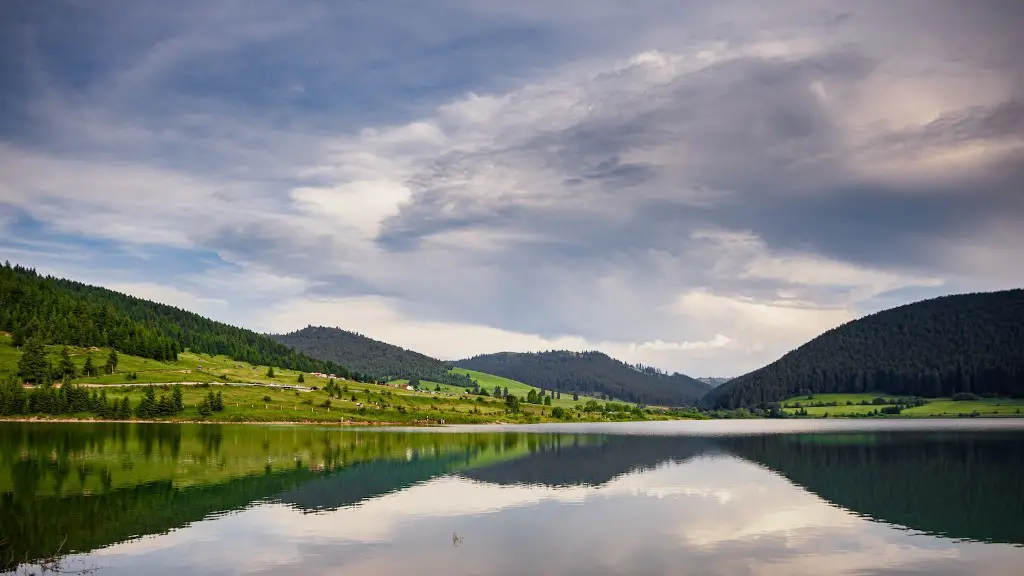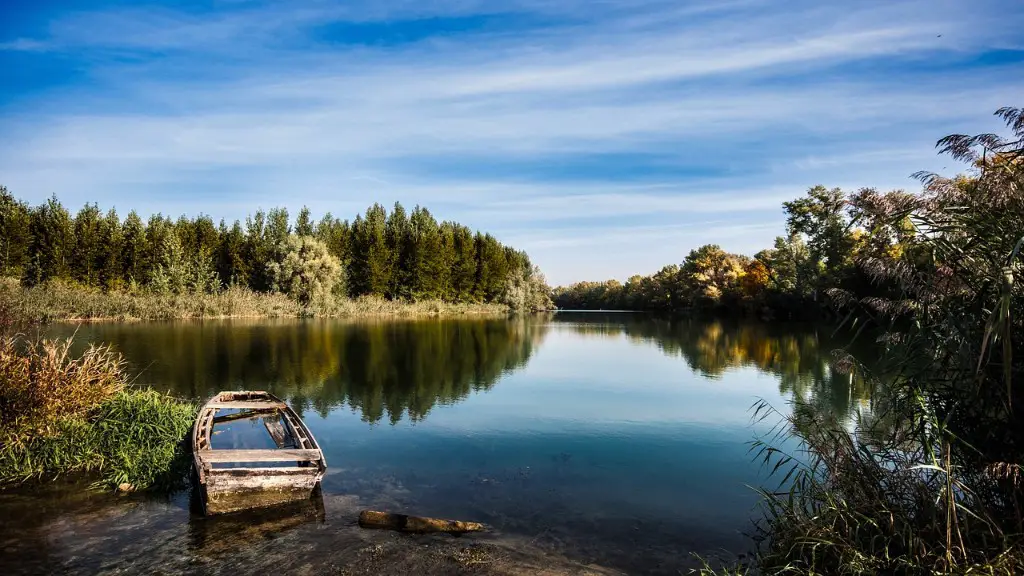The Mississippi River drainage basin is the fourth largest in the world, after the Amazon, Congo, and Nile. Covering over 1.2 million square miles, the basin is basically a funnel shaped area shaped by tributaries. It stretches east from the Mississippi River Valley, across the Great Plains and the rocky mountains, into Wisconsin and the Canadian border. Within the drainage basin is the Upper Mississippi Basin, the Lower Mississippi Basin, and the Gulf of Mexico.
The Upper Mississippi Basin is the furthest upstream and encompasses everything upstream starting at the headwaters near Lake Itasca in Minnesota and ending just downriver of St. Louis, Missouri. This basin includes portions of ten states and two Canadian provinces. The Upper Mississippi Basin is rich with biodiversity and is home to hundreds of species of fish, plants, and animals. In terms of water supply, the Upper Mississippi contributes around 45-50% of the water into the Mainstream Mississippi.
The Lower Mississippi Basin is the middle portion of the drainage basin and is found just below St. Louis, Missouri. This area is also home to rich biodiversity and encompasses much of the lower Midwest of the United States, including parts of Missouri, Illinois, Kentucky, Tennessee, Arkansas, Mississippi, and Louisiana. Within this area is the vast sensitive wetlands of the Mississippi river delta, which is home to a wide range of habitats, species, and resources.
The Gulf of Mexico serves as the outlet for the main stream Mississippi River. Here, the waters from the Upper and Lower Mississippi basins widen and merge into the Gulf of Mexico; this part of the river is some of the most muddy and treacherous parts of the river with over 6,000 miles of productive coastline. This part of the basin sees much of the same species and habitats, but also has different kinds of ecosystems including coral reefs, estuaries, mangroves, and canals.
Not only is the Mississippi River basin large, it is also incredibly important to the life and livelihood of people, wildlife, and the economy in the basin. It provides drinking water, irrigation water, and recreation opportunities to over 2 million people. It is known to be a major transportation route for shipping and barges, as well as being one of the most important industrial centers in the country. Economically, the Mississippi River is responsible for creating jobs, providing leisure activities, and producing goods/services that are vital to many people’s livelihood.
The Upper, Lower, and Gulf of Mexico parts of the Mississippi River are very inter-connected and each has their own set of characteristics for water quality and quantity, wildlife, and environmental conservation. This means the basin is more than the sum of its parts and requires a management plan in order to ensure the balace of its water supplies, habitats, and wildlife. To that end, the government has been involved in the protection of the basin through the implementation of various regulations, laws, and treatments.
In order to maintain the health of the Mississippi River basin and allow it to thrive, as well as protect public safety and health, it is important to regularly monitor and analyze the basin. This includes tracking water flows and assessing water quality, as well as monitoring wildlife populations, and preserving critical habitats. This allows us to better understand the health of the basin, implement measures to protect it, and ensure its resources can be used in the most effective and efficient way.
Flooding
Flooding is a major concern in the basin due to the large amount of water that flows through it. The basin has seen numerous floods since the mid-1800s, and about every 25-30 years on average. Unfortunately, many of these floods have caused a great deal of damage to land, homes, and businesses in the basin. The floods have also had a negative impact on wildlife, agriculture, and the health of local communities. In order to reduce the damage caused by flooding, many cities, counties, and states have implemented flood control measures including flood walls, levees, and dams.
In addition to man-made measures, nature also plays an important role in controlling flooding. Wetland restoration and preservation are critical to the health of the basin as they serve to reduce the impact of flooding. By absorbing the flood waters and acting like a sponge, the wetlands help to contain the flow of water and disperse it to adjacent areas.
In recent years, both conservation efforts and flood control techniques have been improved in order to reduce the amount of flooding in the basin. This includes increased efforts to preserve wetlands, manage stormwater runoff, and create new channels for floodwaters.
Environmental Conservation
The protection of the basin is critical to the health of its habitats, wildlife, and people. As the basin is home to a diverse array of resources and unique ecosystems, it is important to ensure they are preserved. To this end, the government has implemented several regulations aimed at conserving the basin’s resources. These include the creation of various wilderness areas and national parks, as well as the establishment of fishing and hunting regulations. In addition, many organizations and non-profits are actively working to restore the basin, conserve species, and create new channels for floodwaters.
As the basin is home to a range of species, some of which are endangered, it is important to ensure the health of these species. Organizations such as the Smithsonian Institution have been focusing on wildlife conservation in order to preserve these species for future generations. In addition, many of the local communities in the basin have also taken steps to protect their local wildlife, such as enacting hunting restrictions, creating wildlife refuges, and increasing habitat conservation efforts.
Overall, environmental conservation is of the utmost importance in the basin and is crucial to the health of its wildlife, habitats, and livelihoods. The government, non-profits, and local communities are all working together to protect the basin and ensure its resources are available to future generations.
Agriculture
The Mississippi River basin is home to a variety of agricultural activities, including livestock and crop production. This agricultural activity is incredibly important to the economic stability of the basin, as well as the health of its resources and ecosystems. Agriculture in the basin includes everything from small community-level operations to large-scale industrial operations.
In terms of livestock, the basin is home to a variety of animal species, from cows and horses to sheep and chickens. Each of these species is responsible for producing food and other resources for local and regional markets. In addition, many agricultural operations in the basin are focused on growing crops such as soybeans, corn, cotton, and wheat. These crops are essential for the production of food and other goods, as well as a source of income for many local farmers.
Conservation measures have been taken in the basin to protect the agricultural resources, including the establishment of conservation easements, the creation of buffer zones, and the implementation of crop rotation. All of these measures seek to protect the land, soil, and water resources in the basin, while at the same time supporting agricultural production. In addition, many organizations and non-profits are actively working to increase the sustainability of agricultural production in the basin, through research and technology, as well as education and outreach efforts.
Industrial Activity
The Mississippi River basin is also home to a variety of industrial activity, primarily in the form of manufacturing and energy production. Much of this industrial activity is centered around major cities like St. Louis, Missouri and Memphis, Tennessee, although there are also smaller industrial hubs scattered throughout the basin. These industrial activities range from coal production to chemical, steel, and paper production.
Industry can have both positive and negative impacts on the basin. On the one hand, industry creates jobs, generates economic activity, and supports local businesses. On the other hand, industrial activity can create pollutants that can harm the environment, such as air and water pollutants. As such, it is important to ensure that industrial activity in the basin is regulated and monitored in order to protect the basin’s resources and ecosystems.
In order to protect the basin’s resources and ecosystems from industrial pollution, many organizations have implemented regulations and treatments to reduce the impact of industrial activities. This includes implementing air and water pollution regulations, monitoring and treating industrial wastewater, and enforcing strict emissions standards. In addition, organizations have also worked to increase the efficiency of industrial processes, such as improving the use of renewable energy sources and implementing waste reduction methods.
Economic Impacts
The Mississippi River basin is an important economic engine for the United States. Not only is it an important transportation hub and source of water/agricultural products, it also provides a range of economic opportunities and jobs. In fact, it has been estimated that over 1 million people in the basin are employed in the transportation, energy, tourism, and agricultural industries.
In addition to these direct jobs, the basin’s economic activities also create an enormous amount of secondary economic activity. This includes jobs in retail, hospitality, and other services, as well as an increase in the economic activity of local communities. In other words, the Mississippi River basin is not just an economic resource, but also a key driver of economic activity.
The basin also serves as a key environmental asset for the United States. Not only does it provide essential water and agricultural resources that are vital to the region, but it also helps to protect and restore the environment by providing habitat for wildlife, reducing the risks of flooding, and supporting carbon sequestration. In other words, the Mississippi River basin is a valuable asset to the United States that must be protected and preserved.





